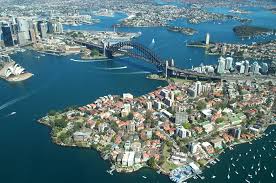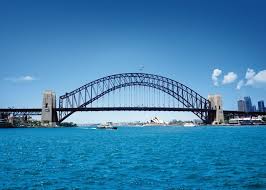Everyone was really excited when they got down to breakfast. For a lot of our fellow passengers, this was set to be the most exciting day of the tour. We were off to see the terracotta warriors.
On the way, the bus made a detour to take us to see the ancient city walls of Xi’an. They were really interesting. There were lots of watch towers and we went into one. It turned out to be a shop. it sold beautiful jade carvings, paintings, lacquerwork and silks. One lady wanted to buy a beautiful rug but it was really expensive. When she said no, they dropped the price by three hundred pound. needless to say she bought it and arranged for it to be shipped back.
(The fortifications of Xi’an, an ancient capital of China, represent one of the oldest and best preserved Chinese city walls. Construction of the first city wall of Chang’an began in 194 BCE and lasted for four years. That wall measured 13.74 kilometres (8.54 mi) in length, 12–16 metres (39–52 ft) in thickness at the base. The area within the wall was roughly 36 square kilometres (14 sq mi). The existing wall was started by the Ming Dynasty in 1370. It encircles a much smaller city of 14 square kilometres (5.4 sq mi). The wall measures 13.7 kilometres (8.5 mi) in circumference, 12 metres (39 ft) in height, and 15–18 metres (49–59 ft) in thickness at the base. South Embrasure Watchtower of Xi’an and the City Wall was constructed in 1378 and destroyed by fire in 1926.
The State Council of the People’s Republic of China, stated on 4 March 1961, that the Fortifications of Xi’an be included as a heritage site under national protection. On 28 March 2008, China proposed the Xi’an Fortification be included on UNESCO’s World Heritage List, where it is categorized as a tentative listing – Wikipedia)
When we finished shopping, we went back to the wall and watched some people playing games in the shade below the walls. It was a fast paced game and they were really enjoying it but none of us could make head or tail of it.
Soon we all got called back onto the bus. We were all excited about getting to the warriors but first we made a stop at a factory that made and sold replicas for the tourist trade. It was quite interesting as they told us how the actual terracotta warriors were patched up if they were broken when they were dug up.
The flu was sweeping through the bus and quite a few had caught it so they were feeling pretty miserable and just sat outside instead of doing the tour. Shaz had it really badly. She did the tour but she felt really crook.
Finally we headed off to see the real warriors. There were several different buildings that housed the warriors. We went into the largest and immediately it took our breath away to see row upon row of clay soldiers. Each one was beautifully carved and each one was individual. there were also horses and cattle and wagons. We all stood there silently. It is one thing to see them on TV but to see them “in the flesh” so to speak is spine tingling.
I could imagine what the poor farmer felt when he dug up the first one. That lifelike head appearing out of his field and then as they continued digging everything else was suddenly exposed. They think there are a lot more soldiers to dig up but they are going to leave them underground until they discover a more effective way to preserve them.
(The Terracotta Army or the “Terracotta Warriors and Horses” is a collection of terracotta sculptures depicting the armies of Qin Shi Huang, the first Emperor of China. It is a form of funerary art buried with the emperor in 210–209 BCE and whose purpose was to protect the emperor in his afterlife.
The figures, dating from approximately the late third century BCE, were discovered in 1974 by local farmers in Lintong District, Xi’an, Shaanxi province. The figures vary in height according to their roles, with the tallest being the generals. The figures include warriors, chariots and horses. Estimates from 2007 were that the three pits containing the Terracotta Army held more than 8,000 soldiers, 130 chariots with 520 horses and 150 cavalry horses, the majority of which remained buried in the pits nearby Qin Shi Huang’s mausoleum. Other terracotta non-military figures were found in other pits, including officials, acrobats, strongmen and musicians.- Wikipedia)
(The Terracotta Army was discovered on 29 March 1974 to the east of Xi’an in Shaanxi province by farmers digging a water well approximately 1.6 kilometres (0.99 mi) east of the Qin Emperor’s tomb mound at Mount Li (Lishan), a region riddled with underground springs and watercourses. For centuries, occasional reports mentioned pieces of terracotta figures and fragments of the Qin necropolis – roofing tiles, bricks and chunks of masonry. This discovery prompted Chinese archaeologists to investigate, revealing the largest pottery figurine group ever found in China.- Wikipedia)
We spent most of the day just wandering around the various pits marvelling at the various things on display. There was also an informative docomovie and a museum. Wayne and I wanted to see as much as we could but poor Shaz was getting sicker by the minute. Finally she gave up on looking around and after lunch she just sat in the shade and waited for us.
( Four main pits approximately 7 metres (23 ft) deep have been excavated. These are located approximately 1.5 kilometres (0.93 mi) east of the burial mound. The soldiers within were laid out as if to protect the tomb from the east, where all the Qin Emperor’s conquered states lay.
Pit one, which is 230 metres (750 ft) long and 62 metres (203 ft) wide, contains the main army of more than 6,000 figures. Pit one has 11 corridors, most of which are more than 3 metres (9.8 ft) wide and paved with small bricks with a wooden ceiling supported by large beams and posts. This design was also used for the tombs of nobles and would have resembled palace hallways when built. The wooden ceilings were covered with reed mats and layers of clay for waterproofing, and then mounded with more soil
Pit two has cavalry and infantry units as well as war chariots and is thought to represent a military guard. Pit three is the command post, with high-ranking officers and a war chariot. Pit four is empty, perhaps left unfinished by its builders.
Some of the figures in pit one and two show fire damage, while remains of burnt ceiling rafters have also been found. These, together with the missing weapons, have been taken as evidence of the reported looting by Xiang Yu and the subsequent burning of the site, which is thought to have caused the roof to collapse and crush the army figures below. The terracotta figures currently on display have been restored from the fragments.
Other pits that formed the necropolis also have been excavated. These pits lie within and outside the walls surrounding the tomb mound. They variously contain bronze carriages, terracotta figures of entertainers such as acrobats and strongmen, officials, stone armour suits, burials sites of horses, rare animals and labourers, as well as bronze cranes and ducks set in an underground park. – Wikipedia)
It was an incredibly interesting experience and one that I’m sure none of us will ever forget.
Although we were all tired after our amazing day, we were all bright-eyed and busy tailed that night because we were off to the Tang Dynasty Theatre Restaurant to experience an evening of Chinese culture. I was really looking forward to it and it didn’t disappoint.
According to the very attractive program, The Tang Dynasty Restaurant proudly presented “a performance of Chang’an Music and Dance which originated over a thousand years ago in ‘Chang’an’ , the capital of the Tang dynasty, which is now known as ‘Xi’an’.The Tang dynasty lasted from 618 A.D. to 907 A.D.”
The program was presented in four parts. The first part called, “The King of Ever” showcased many historic Chinese musical instruments, many of which are no longer used.
The second segment featured four different “mood” dances. the first was the ‘ White Ramie Cloth Costume Dance” It was choreographed to show the flowing quality of the Ramie loth which was invented by the Chinese over one thousand, five hundred years ago. The second dance, the “Da Nuo is a masked dance that was used to expel epidemics and ghosts.
The ‘Rainbow Costume Dance’ was the third dance. It was choreographed to represent Emperor Xuan Zong’s dream of celestial women dancing in the sky and the final dance was the “Warrior’s Triumphal Dance which was designed to express the powerful spirit of his troops.
The next section was a beautiful musical interlude with haunting melodies played by Mr Gao Ming on the Pai Xiao – a three thousand year old instrument.
The final segment of the night was a clog dance. It represented the people dancing to celebrate the mid-autumn festival when to their jot, the Emperor appears and joins in.
The entertainmentb was unbelievably beautiful. The costumes, instruments and the dances were amazing and the Western style dinner was delicious. It was a night to remember.
Wow! What a day. It was non-stop and it was fabulous.












































































































































































